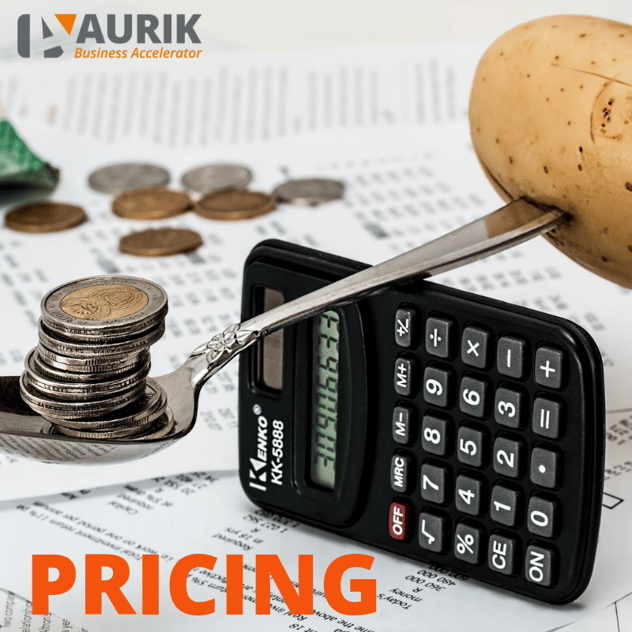Pricing sensitivity has driven innovation for years. Because the economy is a massive, complex ecosystem, everything in it is linked and poor growth drives pricing pressures on us all. Yet, the fundamentals of pricing are static. How then do you deal with pricing in this economy when you face the challenges stated in the message below?
This is a Twitter message from a listener “The pricing game is emotional…Suppliers raise prices and you are forced to decide:
1. Do you segment and risk alienating the very people you want to be serving or,
2. Run at a loss until economies of scale kick-in and you can negotiate better bulk cost price. HELP”
Listen to the podcast HERE

Pricing can become very emotional. A challenge to your pricing feels personal, especially when you are in the early phase of your business growth cycle. But it never is. Pressure from a customer on your pricing might be real or part of the game in business. Figuring out which one it is and understanding the levers you must manage for your pricing are both science and art…. but mostly science.
Pricing Pressure – real or game?
Customers negotiate pricing for several reasons: Affordability, better pricing elsewhere, just because it’s in their nature, corrupt intentions, alternative substitutes that come in at a better price, perceptions of value are a few.
For so long as someone negotiates, they want to engage. People who are unhappy about pricing and simply walk away, rob you of the opportunity to improve and grow your business. Seldom is it personal.
Understanding the reasons are vital because in them lies real value for you to respond in a meaningful way. For example:
Nature
Customers who have a trading mentality and legacy have negotiation built into their DNA. Its how they see the world and how they operate and respond to the world. They will negotiate despite themselves. In many industries and in cultures around the world, trading and negotiation is part of what makes business fun and engaging. It builds relationships and creates commercial social engagements and in that, friendships, and relationships.
Value
Customers cannot see the value you are offering. That’s your fault and the blame stays with you. Value is a hard thing to demonstrate. It does not come from a product and its features. There are many products out there with similar if not better features. Value comes from effective messaging and communications from your marketing and sales process. It is then amplified or destroyed by your fulfilment and delivery process which should get the promised service or product to your customer. It is an experience as much as it is perceived and its real as much as it's quantified.
Competition
Everyone faces competition. This is when your product faces comparison with another product. Mostly you can compare feature to feature, for example, a car. If you want a 1.8 sedan, there are loads in the market across many brands. Competition on the product is direct and real and big price differences swing the buying decision.
Substitutes
This will come from products or services that deliver a similar outcome for the customer. For example, a substitute service to the horse in 1902 was the car. Both achieve a similar outcome, getting you from A to B. If the car is dramatically more costly than the horse, then the horse would’ve remained in play. In today's terms, think Uber versus buying a new car.
What are the levers of pricing?
The pricing of your product has three technical levers and one artistic lever. Technical levers include the costs and competition.
Costs
You must cost out your product or service. If you are making something, it's easier to cost out as opposed to a service that you have created. Both have input costs including raw materials, manufacture and production, fulfilment and delivery. Everything from the pencil to the power you use to produce this product must be costed and understood.
Competition
You must understand the difference between you and your competitors. If you have a product company, then product comparisons are likely and so features and abilities of the products are a big deal. That’s half the game.
The other half lies in understanding the final experience the customer will have and costing that out too. Once you have this understanding, position yourself in the market to win as best as you can. Remember, your pricing will enforce that positioning. You cannot be the cheapest and best quality. Both carry costs and those costs add to the final price you offer your customer along with the promise of the experience that they’ll have from you.
Value
This is hard to get right. Most businesses claiming to offer value rely on marketing messaging but have no real answer to how value is calculated and sold. There is a formula for this and here it is: Value = Difference between a customer’s problem not being sold and the cost of your solution to that customer.
Quantifying a customer’s problem requires a few things:
- A profound and deep understanding of your customer and the problem you solve for them. there is no such thing as a luxury buy from a customer. Everything anyone and everyone buys, solves a problem for them. if you can’t articulate that problem, you do not understand both your business and your customer. Read more on getting this right HERE.
- Costing out that problem in real money is the true test to which you understand the customer and the problem you claim to solve for them. It must include everything leading up to the problem, everything in the problem and everything after the problem - all solved. For example: Competing with Chinese imported products should be calculated not only on the product but the entire cost of doing business to get that product into store, sold and serviced thereafter.
- Get the math right – persist in understanding the maths and be sure that your costing strives to continuously improve the accuracy of these costs.
Your artistic lever is how you ascribe and communicate your value.
This lever is all about wrapping. You have a beautiful product/service, make sure you communicate it widely and simply. The extent to which you achieve this is entirely dependent on who your customer is, how they buy, why they buy, when they buy and so on. You can see why trying to be all things to all people and serving all customers will lead you to become nothing to anyone, resorting to a haggling, price negotiation on each sale.
What if you’ve done it all and still can’t win?
There are a number of alternative strategies but consider these two for now:
Dead End
Then your business is flawed. Some products and services require massive muscle to succeed. These are the generic, commodity businesses. Baked beans are a pricing game in urban areas. Fynbos infused tissue oil is not.
Innovate
Innovation is all about necessity. If you can't win by playing by the rules, change the rules. That’s what Uber did, you could do it too. But we have already discussed how to get that right. Check it out HERE.
If you have a great product or service and you can see it solving 101 problems for 101 customers, let's talk. If you have a good business that’s done well in the past and is now facing formidable pricing pressures, let's talk. Leaving both “conditions” unattended will take you to the edge of the precipice. Then little can be done to run that fateful next step into a new direction, and with that, a business that thrives once more. We call this journey building an Asset of Value. It's all you should be doing, all the time and its something we’d be glad to do with you.

